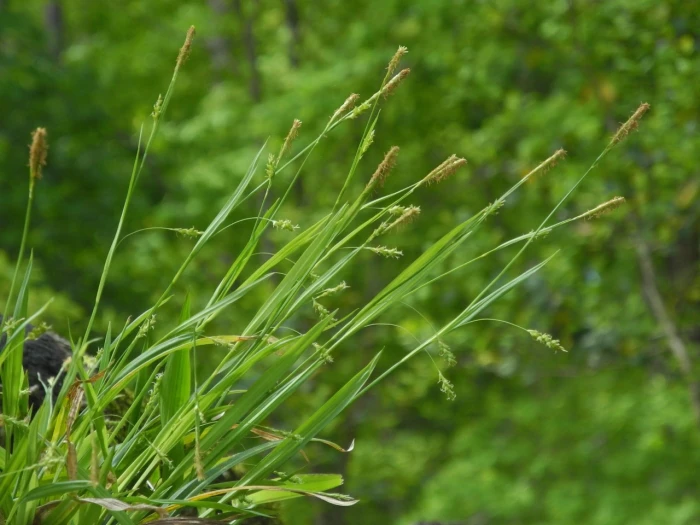Common Woodland Sedge
(Carex blanda)
Common Woodland Sedge (Carex blanda)
/
/

Michael J. Papay
CC BY 4.0
Image By:
Michael J. Papay
Recorded By:
Copyright:
CC BY 4.0
Copyright Notice:
Photo by: Michael J. Papay | License Type: CC BY 4.0 | License URL: http://creativecommons.org/licenses/by/4.0/ | Rights Holder: Michael J. Papay | Publisher: iNaturalist | Date Created: 2021-04-20T10:42:02-07:00 |















































Estimated Native Range
Climate Requirements for Oak Ridge, Florida
| This Plant | Your Site | Plant Suitability for Your Location | ||
|---|---|---|---|---|
| • Precipitation | 8" - 78" | 48" | Aquatic | Aquatic |
| • High Temp. | 49°F - 97°F | 92°F | Your summer temperatures are normal for this plant. | Excellent |
| • Low Temp. | -33°F - 45°F | 49°F | OK, but your winter temperatures are warmer than normal for this plant | OK |
This plant should grow very well at your location but requires an aquatic environment.
Summary
Carex blanda, commonly known as Common Woodland Sedge or Eastern Woodland Sedge, is a perennial sedge native to a variety of habitats including deciduous forests, moist meadows, floodplains, and along stream banks in the eastern and central United States and Canada. It typically forms dense clumps reaching 6-24 inches in height and width. The leaves are grass-like, 1–10 mm wide, and the flowering stems are slightly taller, bearing inconspicuous greenish-brown flowers in late spring to early summer.
Common Woodland Sedge is valued for its adaptability and use as a ground cover in shaded areas, where it can form a dense carpet that suppresses weeds and stabilizes soil. It is often used in naturalized areas, rain gardens, and as an understory planting in woodland gardens. This sedge prefers moist to wet conditions and can tolerate a range of soil types, though it thrives in rich, well-drained soils. It is a low-maintenance plant that requires little care once established. Carex blanda can be aggressive in optimal conditions, spreading by rhizomes to form large colonies, which should be considered when planting in small garden spaces or near borders.CC BY-SA 4.0
Common Woodland Sedge is valued for its adaptability and use as a ground cover in shaded areas, where it can form a dense carpet that suppresses weeds and stabilizes soil. It is often used in naturalized areas, rain gardens, and as an understory planting in woodland gardens. This sedge prefers moist to wet conditions and can tolerate a range of soil types, though it thrives in rich, well-drained soils. It is a low-maintenance plant that requires little care once established. Carex blanda can be aggressive in optimal conditions, spreading by rhizomes to form large colonies, which should be considered when planting in small garden spaces or near borders.CC BY-SA 4.0
Plant Description
- Plant Type: Grass
- Height: 1-2 feet
- Width: 0.5-1 feet
- Growth Rate: Slow
- Flower Color: N/A
- Flowering Season: Spring
- Leaf Retention: Evergreen
Growth Requirements
- Sun: Part Shade
- Water: High
- Drainage: Medium
Common Uses
Bird Garden, Deer Resistant, Fire Resistant, Groundcover, Low Maintenance, Street Planting
Natural Habitat
Native to deciduous forests, moist meadows, floodplains, and along stream banks
Other Names
Common Names: Creek Sedge, Eastern Woodland Sedge, Common Wood Sedge, Carex Lisse
Scientific Names: Carex blanda, Carex laxiflora var. blanda, Carex anceps var. blanda, Deweya blanda
GBIF Accepted Name: Carex blanda Dewey